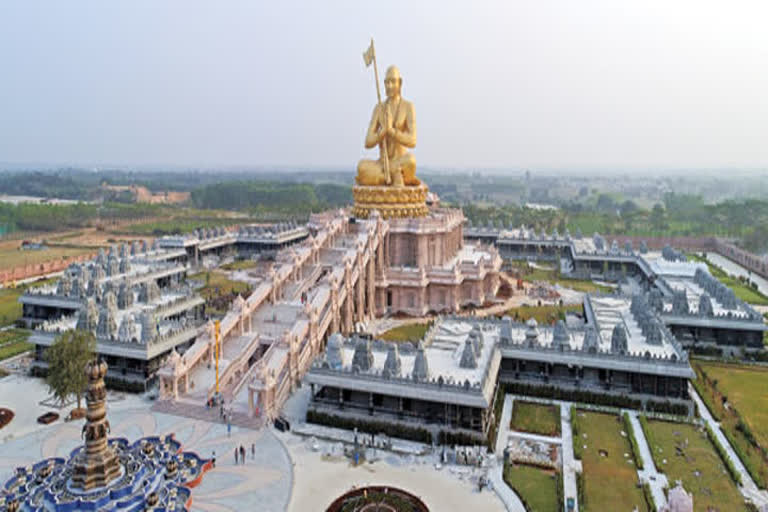Hyderabad (Telangana): Prime Minister Narendra Modi will unveil the 'Statue of Equality' in Hyderabad on February 5. The statue is billed as the world's second-largest statue in a sitting position, at the 45-acre complex on the outskirts of the city, as per a statement issued by Chinna Jeeyar Swamiji's ashram. While President Ram Nath Kovind will inaugurate a 54-inch idol of gold weighing 120 kg, representing the number of years the 11th-century saint lived, in the huge meditation hall at the base of the 216-foot statue on February 12.
The statue is dedicated to 11th-century seer and philosopher, Ramanujacharya who was born in 1017. He was instrumental in bringing various sections of the society including the common man, bureaucrats, elite, and rulers under one roof.
The 216 feet high statue is made of five metals in the most vibrant and elegant posture. Like 135 feet Tridandam, three sticks held together with white cloth representing that anything you see has three entities - physical nature, soul, and the supreme power. The sculptor of the statue Chinajiyar Swamiji has taken a special interest in finalizing the design of Ramanujacharya's elegant statue.
Initially, he framed 14 models incorporating Agama Shastra and Shilpa Shastra. Eventually, three models were picked up and were examined with 3D scannings. To construct 108 Divya Desas around the Ramanujacharya statue, the sculptors visited all Divya Desas, which are unique in architecture. Taking into consideration the different sculptures at every place, a plan was made to construct the sanctum, source pillar, and the main idol correspondingly with the existing temple’s approach.
Also read:PM, President to attend unveiling of Ramanujacharya statue
The construction of temples was a very challenging task as 108 temples were completely different in nature. The sculptors were cautious enough to bring the same look and essence. Thousands of stones were set up. To construct the idols in the temples, Purushasila stone, which is a suitable material for worshipping idols, was used. The sculptors examined the stone from Valajya of Kanchipuram and tested its sound before proceeding to sculpt the idols.
